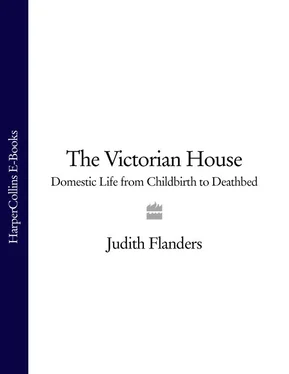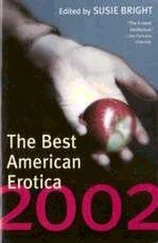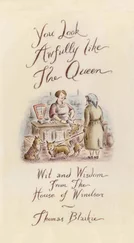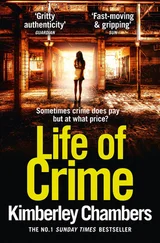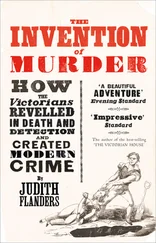Builders are in the habit of digging out the gravel on which they ought to found their houses, and selling it. The holes must be filled. The refuse of London is bad to get rid of though the greater part is put to various uses. The builders buy, not the cinders and ashes, but decaying animal and vegetable matters etc. to fill the gravel parts. It is not safe to build on at first, so is spread on the ground to rot, covered with a layer of earth … After a while the bad smells soak through the earth and floors and cause fevers. This delightful substance is called ‘dry core’. 68
The result of all this was houses that were no sooner finished than they needed repair. The Transactions of the Sanitary Institute of Great Britain despaired over both the lack of good building practices and the preference for display before solidity:
Here is a house, empty, which was completed and occupied two years ago. Notice how the inside is finished, to take the eye: good mantel-pieces, showy grates, and attractive papers. Now look at the floors. Not one of them is level; they are at all sorts of angles, owing to the sinking of the walls … Notice how the damp has risen, even to the second-floor rooms, and in all the water has come through the roof, not in one, but in many places. The bath room, & c., is conspicuous, but only to the practised eye, by reason of the scamped plumbing and forbidding fittings used. Look at the exterior … Observe how the roof sags, owing to the scantlings of the rafters being insufficient … 69
Fresh from Boston, the diarist Alice James, invalid sister of the novelist Henry James and the philosopher and psychologist William James, was shocked at the ‘dumb patience’ of the English, which allowed these practices:
the generality of middle class houses … rock and quake when one walks across the floor, and you hear the voices of your next door neighbours … plainly … The Ashburnes, after a nine years’ search, took a large and good house and had it thoroughly ‘done up’, and then for weeks vainly tried to warm the drawing-room sufficiently to sit in it; then they were told by the people who had the house before them, that the room could never be used in cold weather: George was then inspired to climb up on a ladder and look at the top of the windows, which had all been examined by the British workmen, who had carefully left in the setting of them, several inches of ventilation into the open street.
The immensity of London is so overpowering that a superficial impression of solidity goes with it, and it makes one rather heartsick to learn by degrees that it is simply miles of cardboard houses … * 70
Instead of solidity of structure, what the inhabitants were looking for, and seemed to love for its own sake, was regularity of form. The upper middle classes even built isolated terraced rows set in the middle of parkland, when on the same piece of land each householder could have had a separate house surrounded by a generous parcel of land. 71 The eighteenth century had bequeathed the ‘building line’, the most basic regulation, which ensured that the facades of the houses were kept to a straight line, with nothing protruding – not door frames, not lintels, not even widow frames. By the middle of the nineteenth century, although the concept of the terrace had been internalized, ornamental ironwork and other architectural details were breaking up the starker Georgian rows, and other regulations, mostly based on hygienic concerns, took over: in the 1850s local municipal acts laid down that all new streets had to be 36 feet wide, and at the rear each house had to have 150 square feet of open space.
Other elements of control were imposed by the landlord, or by the residents themselves, who equated regularity and conformity with respectability: gates were to open only in one direction; fences had to be a certain height. 72
Sara Duncan, an American visitor towards the end of the century, got to the heart of the matter. Her cousin’s house, in Half-Moon Street, a fashionable address off Piccadilly, was
very tall, and very plain, and very narrow, and quite expressionless, except that it wore a sort of dirty brown frown. Like its neighbours, it had a well in front of it, and steps leading down in to the well, and an iron fence round the steps, and a brass bell-handle lettered ‘Tradesmen’. Like its neighbours, too, it wore boxes of spotty black greenery on the window-sills – in fact, it was very like its neighbours … Half-Moon Street, to me, looked like a family of houses – a family differing in heights and complexions and the colour of its hair, but sharing all the characteristics of a family – of an old family. 73
These houses were indeed all of a family; and the pattern-book house was simple. It could not be more than four times as deep as it was wide, or it would be too dark. Schematically laid out, the generic house looked like this:
| Top floor: |
servants’ and children’s bedrooms (usually two) |
| Half-landing: |
bathroom (often) |
| Second floor: * |
master bedroom, dressing room (in larger houses), second bedroom |
| First floor: |
drawing room |
| Ground floor: |
dining room, morning room |
| Basement: |
kitchen, scullery, possibly a breakfast room |
Smaller houses might have only three floors: basement, ground and first. This meant a six-room house, consisting of kitchen and scullery in the basement, two reception rooms on the ground floor, two bedrooms upstairs. All houses, of whatever size and number of rooms, were built on a vertical axis, with the stairs at the centre of household life. As a woman in H. G. Wells’s Kipps noted, ‘Some poor girl’s got to go up and down, up and down, and be tired out, just because they haven’t the sense to give their steps a proper rise … It’s ‘ouses like this wears girls out. It’s ‘aving ‘ouses built by men, I believe, makes all the work and trouble.’ 74
Not everyone thought the same. Nathaniel Hawthorne, in his years in England, learned to love the regularity and system. In Leamington Spa he approved of
a nice little circle of pretty, moderate-sized, two-story houses, all on precisely the same plan, so that on coming out of any one door, and taking a turn, one can hardly tell which house is his own. There is a green space of grass and shrubbery in the centre of the Circus, and a little grass plot, with flowers, shrubbery, and well-kept hedges, before every house, and it is really delightful … so cleanly, so set out with shade-trees, so regular in its streets, so neatly paved, its houses so prettily contrived, and nicely stuccoed, that it does not look like a portion of the work-a-day world. ‘Genteel’ is the word for it … The tasteful shop-fronts on the principal streets; the Bath-chairs; the public garden; the servants whom one meets … the ladies sweeping through the avenues; the nursery maids and children; all make up a picture of somewhat unreal finery … I do not know a spot where I would rather reside than in this new village of midmost Old England. 75
These were houses for the middle-classes, and they are what will be discussed in the coming pages. The houses of the working classes and the poor had their own problems, and the houses of the upper classes varied too much to be comprehended in one book. But middle-class houses – from the four-to-six-room house of the lower middle class to the twelve rooms or so of the upper middle class – all conformed to a pattern. All, as Sara Duncan noted, shared a family likeness.
*Appendix 2, p. 382ff., is a quick guide to the authors and books I have made use of.
*George Augustus Sala (1828–96), journalist. Dickens sent him to report on the Crimea at the end of the war there, and he made his name as a special correspondent covering the Civil War in America for the Daily Telegraph, He wrote a column called Echoes of the Week’ for the Illustrated London News from 1860 to 1886, and he reported for the Sunday Times from 1886 to 1894.
Читать дальше
